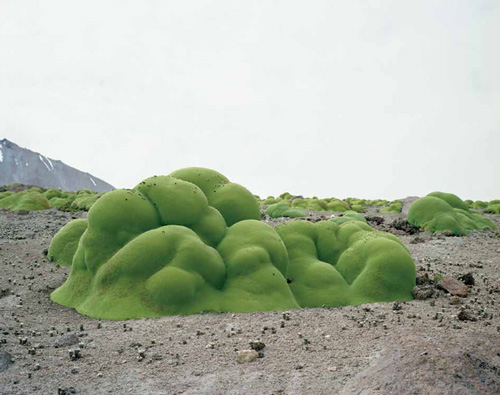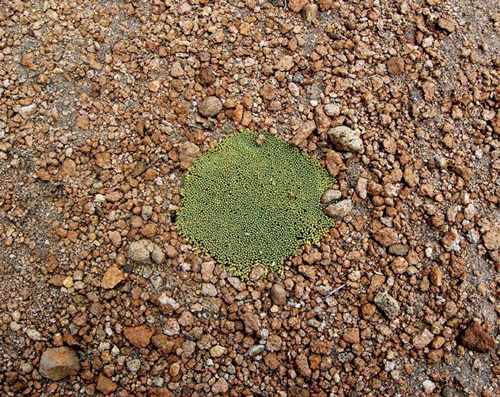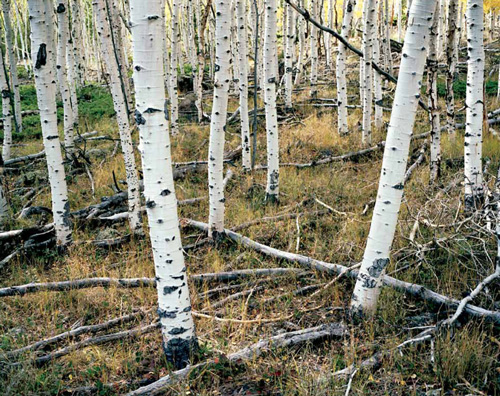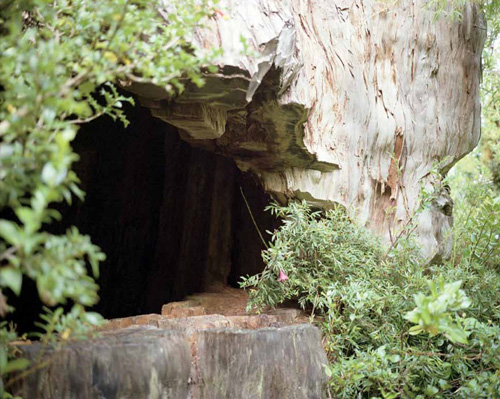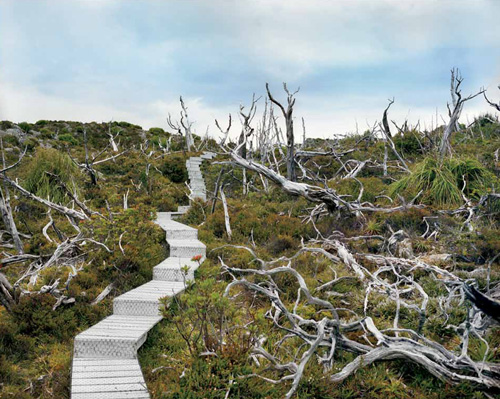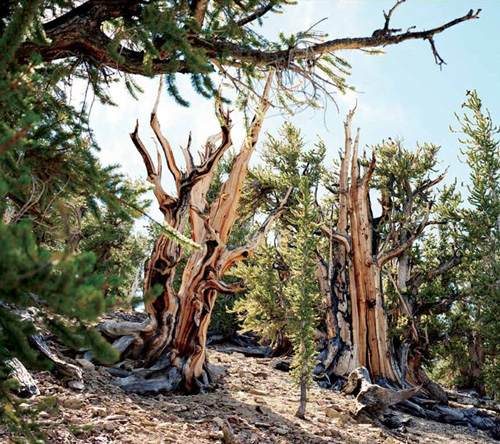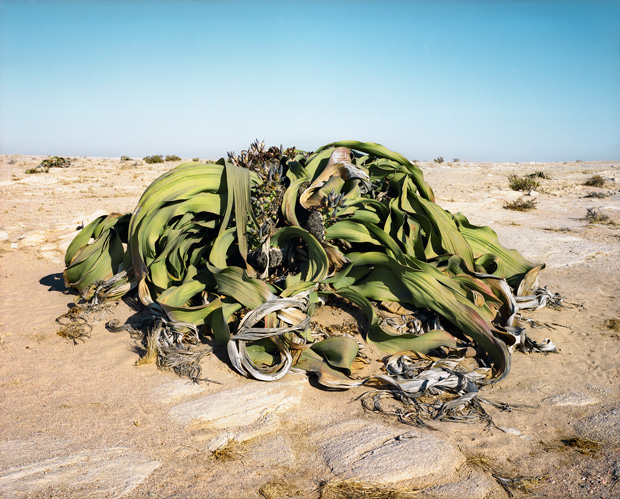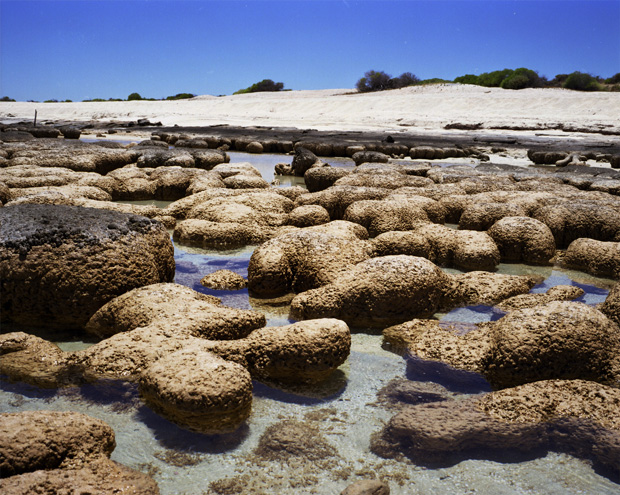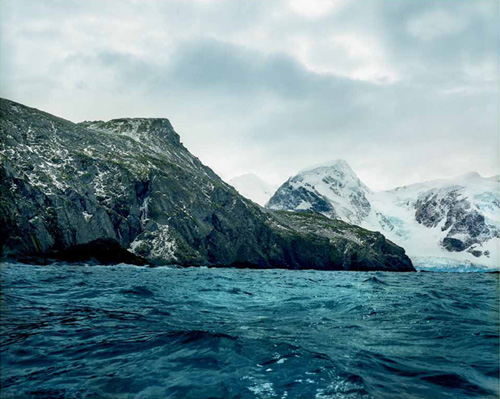The Oldest Living Things on Earth
HISTORY, 21 Sep 2015
Maria Popova, Brain Pickings – TRANSCEND Media Service
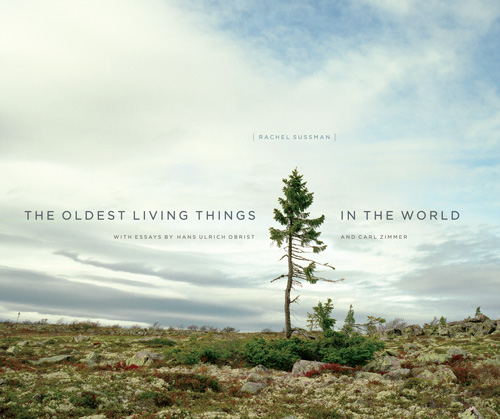
The world’s oldest known living tree sprouted sometime during the last Ice Age, roughly 9,550 years ago. This 16-foot spruce in the Dalarna province of Sweden may look more like a Charlie Brown Christmas Tree, but don’t be fooled: this little guy’s root system got started back when the British Isles were still connected to Europe by an ice bridge. According to Wired, geologist Leif Kullman, who discovered the tree, named it after his dead dog.
“Our overblown intellectual faculties seem to be telling us both that we are eternal and that we are not,” philosopher Stephen Cave observed in his poignant meditation on our mortality paradox. And yet we continue to long for the secrets of that ever-elusive eternity.
For nearly a decade, Brooklyn-based artist, photographer, and Guggenheim Fellow Rachel Sussman has been traveling the globe to discover and document its oldest organisms — living things over 2,000 years of age. Her breathtaking photographs and illuminating essays are now collected in The Oldest Living Things in the World (public library | IndieBound) — beautiful and powerful work at the intersection of fine art, science, and philosophy, spanning seven continents and exploring issues of deep time, permanence and impermanence, and the interconnectedness of life.
With an artist’s gift for “aesthetic force” and a scientist’s rigorous respect for truth, Sussman straddles a multitude of worlds as she travels across space and time to unearth Earth’s greatest stories of resilience, stories of tragedy and triumph, past and future, but above all stories that humble our human lives, which seem like the blink of a cosmic eye against the timescales of these ancient organisms — organisms that have unflinchingly witnessed all of our own tragedies and triumphs, our wars and our revolutions, our holocausts and our renaissances, and have remained anchored to existence more firmly than we can ever hope to be. And yet a great many of these species are on the verge of extinction, in no small part due to human activity, raising the question of how our seemingly ephemeral presence in the ecosystem can have such deep and long-term impact on organisms far older and far more naturally resilient than us.
Above all, however, the project raises questions that aren’t so much scientific or artistic as profoundly human: What is the meaning of human life if it comes and goes before a patch of moss has reached the end of infancy? How do our petty daily stresses measure up against a struggle for survival stretching back millennia? Who would we be if we relinquished our arrogant conviction that we are Earth’s biological crown jewel?
Sussman offers no answers but invites us, instead, to contemplate, consider, and explore on our own — not as creatures hopelessly different from and dwarfed by the organisms she profiles, but as fellow beings in an intricately entwined mesh of life. What emerges is a beautiful breakage of our illusion of separateness and a deep appreciation for the binds that pull us and these remarkable organisms in an eternal dance — our only real gateway to immortality.
Interwoven with Sussman’s photographs and essays, brimming with equal parts passion and precision, are the stories of her adventures — and misadventures — as she trekked the world in search of her ancient subjects. From a broken arm in remote Sri Lanka to a heart-wrenching breakup to a well-timed sip of whisky at polar explorer Shackleton’s grave, her personal stories imbue the universality of the deeper issues she explores with an inviting dose of humanity — a gentle reminder that life, for us as much as for those ancient organisms, is often about withstanding the uncontrollable, unpredictable, and unwelcome curveballs the universe throws our way, and that resilience comes from the dignity and humility of that withstanding.
See more, including Sussman’s TED talk, here, then see my conversation with the artist about the deeper conceptual and philosophical ideas behind her project.
______________________________
Brain Pickings is the brain child of Maria Popova, an interestingness hunter-gatherer and curious mind at large obsessed with combinatorial creativity who also writes for Wired UK and The Atlantic, among others, and is an MIT Futures of Entertainment Fellow. She has gotten occasional help from a handful of guest contributors.
Go to Original – brainpickings.org
DISCLAIMER: The statements, views and opinions expressed in pieces republished here are solely those of the authors and do not necessarily represent those of TMS. In accordance with title 17 U.S.C. section 107, this material is distributed without profit to those who have expressed a prior interest in receiving the included information for research and educational purposes. TMS has no affiliation whatsoever with the originator of this article nor is TMS endorsed or sponsored by the originator. “GO TO ORIGINAL” links are provided as a convenience to our readers and allow for verification of authenticity. However, as originating pages are often updated by their originating host sites, the versions posted may not match the versions our readers view when clicking the “GO TO ORIGINAL” links. This site contains copyrighted material the use of which has not always been specifically authorized by the copyright owner. We are making such material available in our efforts to advance understanding of environmental, political, human rights, economic, democracy, scientific, and social justice issues, etc. We believe this constitutes a ‘fair use’ of any such copyrighted material as provided for in section 107 of the US Copyright Law. In accordance with Title 17 U.S.C. Section 107, the material on this site is distributed without profit to those who have expressed a prior interest in receiving the included information for research and educational purposes. For more information go to: http://www.law.cornell.edu/uscode/17/107.shtml. If you wish to use copyrighted material from this site for purposes of your own that go beyond ‘fair use’, you must obtain permission from the copyright owner.
